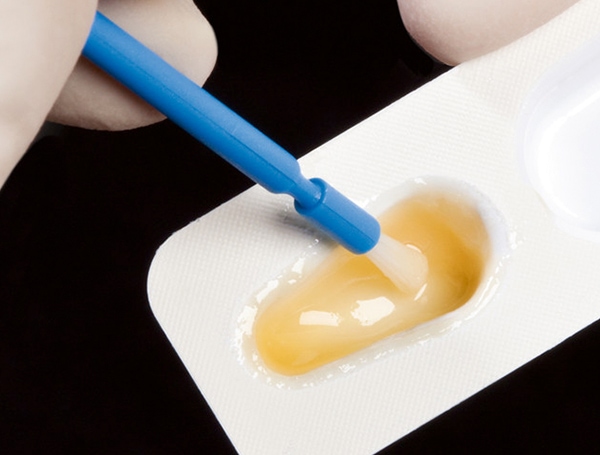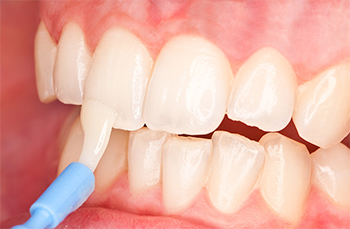 S2K Commerce - Products Dropdown
S2K Commerce - Products Dropdown
 Web Content Viewer - Blog
Web Content Viewer - Blog
3 Factors That Increase Your Risk of Tooth Decay — Fluoride Varnish Can Help

Written by Amber Auger RDH, MPH
The role of dental hygienists has changed dramatically since March of 2020. Due to mandated closures and the ongoing global pandemic, many patients experienced delays in their routine visits and are experiencing increased instances of grinding or clenching, have increased their intake of coffee, wine, and seltzer, and also have more bleeding on probing. Simply put, patients are at high risk for tooth decay with the increased stresses on the ongoing pandemic.

Let’s examine three factors that increase our risk of tooth decay:
- When it comes to the beverages patients consume, the pH of the product often goes overlooked. We often assume that if the product does not have sugar, it can be a healthier alternative for the patient. However, the clinical studies demonstrate that Gatorade Zero has a pH of 2.1.1 Most beverages range in the acidic market, including bottled water. Dental erosion takes place, then the pH of the mouth is 4.0 or less. A clinical study published by the ADA found that 93% of 379 beverages had a pH of 4.0 while only 7% had a pH of 4.0 or more. This included juices, soda, water, sports drinks, flavored water, and tea.2
- There is a greater incidence of patients grinding and clenching. An ADA Health Policy Institute survey of dentists found that 70% of respondents said they’d seen an increase in the number of patients with teeth grinding and clenching, which are often linked to stress. This additional stress on the teeth can increase wear facets and lead to abfraction. The additional exposure to the enamel and the potential exposure to the root surface can increase sensitivity and the patient’s overall risk of tooth decay.
- New on the dental scene: “Mask Mouth,” a term used to classify our patients’ risk factors with prolonged use of a mask. Mask mouth can increase the risk of dry mouth, bad breath, tooth decay, and increase gingival inflammation. PN Medical studied the effect of mask-wearing on breathing and found that patients increased their rate of mouth breathing, which will reduce the amount of saliva in the mouth.3 Additionally, the recycled air that the patient is breathing can trap carbon dioxide, which increases the oral microbiomes acidity, which leads to increased risk of caries and gingival diseases.4
The stresses of the ongoing pandemic have provided the perfect storm for increased oral disease. In order to effectively prevent the progression of oral diseases such as gingivitis and tooth decay, routine visits to a dental professional are essential. Dental professionals will assess a patient’s overall diet and home care regime to help identify what can be modified to reduce their risk of oral disease.

Drinking coffee, wine, and seltzer water can all increase the risk of tooth decay, especially if consuming them for a longer duration. A simple modification is to shorten the duration in which we enjoy acidic beverages or keep them with a meal. When receiving dental treatment, a dental professional can use Fluoride Varnish. The Fluoride Varnish works to remineralize weak areas in both the outer layer of the tooth and the enamel, while simultaneously helping to prevent tooth decay. Implementing a Kolorz ClearShield 5% Sodium Fluoride Varnish with 22,600 ppm of Fluoride and Xylitol is a simple and effective way to reduce the patient’s risk of tooth decay. The clump-free consistency, clear appearance, high fluoride uptake are wins for the hygienist and dentist, while the great tasting flavors appeal to adults and kids, thus increasing patient compliance.
Sources:
- Indiana Dental Association. Drinks that Destroy Teeth. Available at https://drinksdestroyteeth.org/the-unsweetened-truth. Accessed September 5, 2021.
- Reddy. The pH of beverages in the United States. December 2015. Available at: https://doi. org/10.1016/j.adaj.2015.10.019. Accessed September 5, 2021.
- New Investigation: Wear Your Mask to Protect Others Train Your Breathing to Protect Yourself. PN Medical. (2020, December 9). https://www.pnmedical.com/breather-university/effects-of-wearing-face-mask/.
- Geiss, O. (2020, October 7). Effect of Wearing Face Masks on the Carbon Dioxide Concentration in the Breathing Zone. Aerosol and Air Quality Research. https://aaqr.org/articles/aaqr-20-07-covid-0403#.